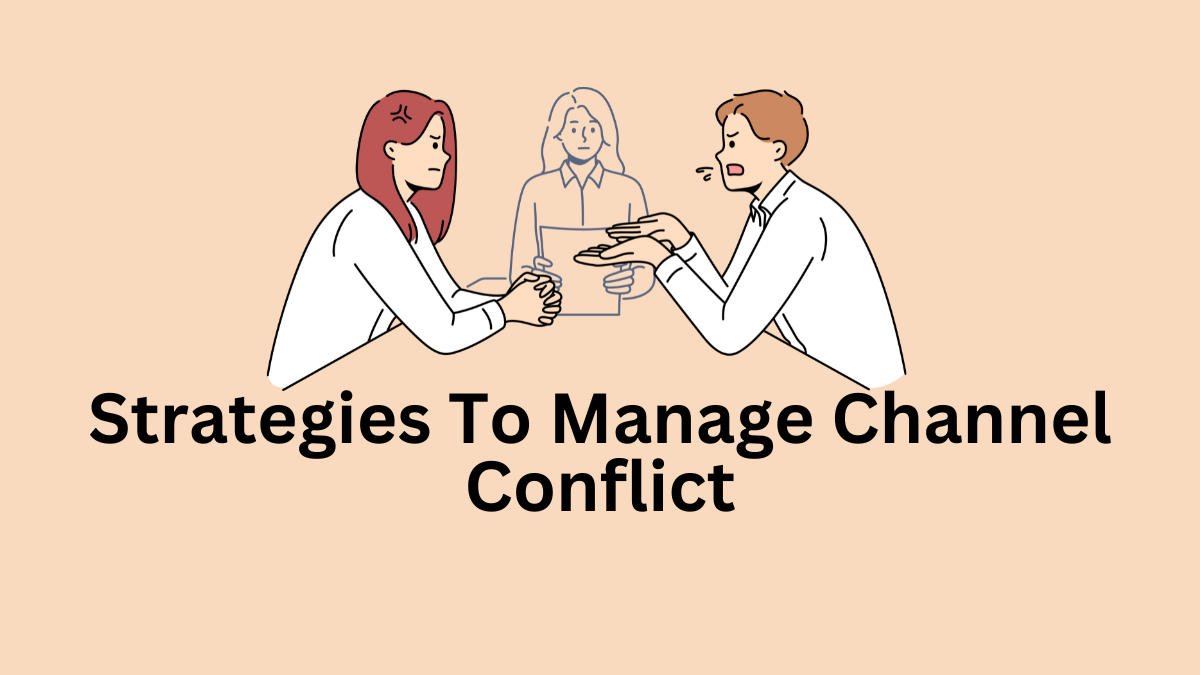Strategies To Manage Channel Conflict
Before managing channel conflict, let’s first understand what it is. Channel conflict refers to any disagreement between two or more channel partners. For smooth business operation, agreement between these channel partners is essential.
However, due to various reasons conflicts arise in businesses between these partners. Below are some reasons for channel conflicts:
- Competing Interests
- Differential Pricing
- Territorial Overlap
- Product Differentiation
- Communication Breakdown
- Market Saturation
- Technological Disparities
- Resource Allocation
- Channel Power Imbalance
- Changes in Distribution Strategy
- Brand Protection
- Market Demand Fluctuations
So far we understood the channel conflict and Its causes. Now, let’s explore the four key strategies to manage channel conflict in business:
Mitigation
Mitigation is the first strategy to manage channel conflict. It involves taking proactive measures to prevent conflicts or reduce their intensity within the channel. It focuses on addressing potential issues before they escalate.
For example, a manufacturer can establish clear guidelines and standardized procedures for pricing policies across all channel partners. By setting predetermined minimum advertised prices or implementing comprehensive training programs to educate partners on conflict resolution techniques, companies can proactively mitigate conflicts.
Conciliation
Conciliation is the second strategy to manage channel conflict. Conciliation emphasizes reconciliation and fostering understanding among conflicting parties. It involves bringing disputing partners together to discuss their grievances, find common ground, and negotiate mutually agreeable solutions.
For instance, a mediator can facilitate discussions between a manufacturer and a distributor regarding disagreements over marketing support allocation. Through open dialogue and compromise, they can reach a consensus that satisfies both parties’ interests.
Arbitration
Arbitration is the third method for managing channel conflict. Arbitration involves appointing a neutral third party, an arbitrator, to independently assess the conflict and make binding decisions or recommendations. This method aims to provide a fair resolution without resorting to lengthy legal procedures.
Read More: What is Reverse Distribution Channel?
For instance, if two channel partners cannot agree on sales territory delineation, they might engage an arbitrator to examine the situation and issue a binding decision on the territorial boundaries, ensuring an impartial resolution.
Regulation
Regulation is the fourth channel conflict resolution method. It entails implementing guidelines, policies, or legal frameworks to govern channel interactions and resolve conflicts. These regulations establish a framework of rules and standards that all channel partners must adhere to.
For example, an industry association might establish a code of conduct that outlines acceptable practices in marketing collaborations. By adhering to these regulations, partners ensure compliance and reduce the likelihood of conflicts arising from ambiguous or conflicting guidelines.
How To Implement These Channel Conflict Resolution Strategies?
Effectively leveraging these strategies requires a comprehensive approach that considers the unique dynamics of your business and channel partnerships. Here’s how to maximize the benefits of each strategy:
Mitigation
Early Intervention: Identify potential conflict points early. Implement proactive measures like clear communication channels, standardized policies, and regular performance evaluations to address issues preemptively.
Read More: Factors Affecting Selection of Distribution Channel
Education and Training: Educate partners on conflict resolution techniques and your company’s expectations. Offer training programs that emphasize collaboration and understanding of mutual goals.
Conciliation
Open Communication: Foster an environment of open dialogue. Encourage partners to express concerns and collaborate on finding mutually beneficial solutions.
Mediation: Employ skilled mediators to facilitate discussions. These neutral third parties can help channel partners navigate conflicts and reach peaceful resolutions.
Arbitration
Clear Guidelines: Establish clear guidelines for engaging in arbitration. Outline the process, expectations, and the binding nature of the decisions reached through arbitration.
Read More: What is a Distribution Channel?
Impartial Selection: Ensure the selection of an unbiased arbitrator who understands the industry nuances and can provide fair judgments.
Regulation
Collaborative Framework: Develop regulations in collaboration with channel partners. Create guidelines that address common pain points while ensuring fairness and compliance.
Regular Review: Regularly review and update regulations to adapt to changing market dynamics, technological advancements, and evolving business needs.
Conclusion – combining these strategies can create a comprehensive conflict management framework that fosters healthy relationships within your channel partnerships. It’s crucial to tailor these approaches to the specific needs and differences of your business environment while emphasizing communication, fairness, and the pursuit of mutually beneficial resolutions. Regularly assess the effectiveness of these strategies and refine them to optimize outcomes and maintain positive channel dynamics.
Read Next: Direct Vs. Indirect Distribution Channels: 10 Key Differences
Arti Kushmi holds a BBS (Bachelor in Business Studies) degree and shares her business and marketing knowledge through this website. While not writing she will be reading and enjoying the moment.
